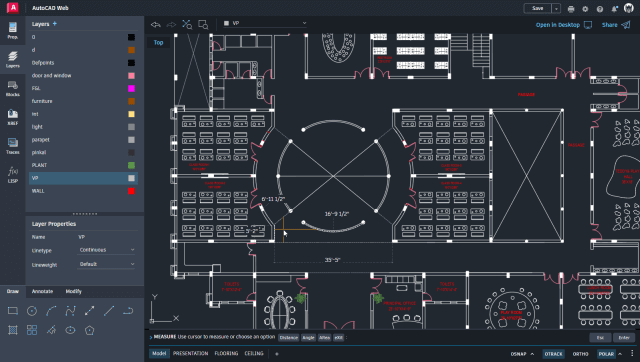Advantages and Disadvantages of AutoCAD

AutoCAD, or computer-aided design and drafting (CADD), is a widely used software application for 2D and 3D design and drafting. It has been a standard tool in various industries, such as architecture, engineering, and manufacturing.
Here are some Advantages and Disadvantages of using AutoCAD:
Advantages:
-
Precision and Accuracy:
- AutoCAD allows for highly precise and accurate drawings, reducing the chances of errors in design and drafting.
-
Efficiency:
- It significantly speeds up the design and drafting process compared to manual methods, improving overall efficiency.
-
Versatility:
- AutoCAD can be used for 2D drafting as well as 3D modeling, making it a versatile tool for a wide range of design tasks.
-
Automation:
- The software allows for the creation of parametric designs and the use of macros, automating repetitive tasks and saving time.
-
Collaboration:
- AutoCAD facilitates collaboration among design teams by enabling easy sharing and modification of design files.
-
Standardization:
- It helps in maintaining standards and consistency across drawings, ensuring uniformity in design documentation.
-
Visualization:
- AutoCAD provides realistic 3D visualization, helping designers and clients better understand the final product.
-
Integration:
- It can be integrated with other software applications, such as Microsoft Excel, for data exchange and linking.
-
Customization:
- Users can customize the interface, commands, and create custom scripts, tailoring the software to specific needs.
-
Wide Industry Adoption:
- AutoCAD is widely adopted in various industries, and proficiency in AutoCAD is a valuable skill in many job markets.
Disadvantages:
-
Cost:
- AutoCAD software can be expensive, especially for small businesses or individual users.
-
Steep Learning Curve:
- AutoCAD has a relatively steep learning curve, and new users may find it challenging to master all its features.
-
Resource Intensive:
- Running AutoCAD may require a powerful computer with sufficient resources, which could be a limitation for some users.
-
Compatibility Issues:
- Files created in newer versions of AutoCAD may not be compatible with older versions, leading to potential issues in collaboration.
-
Lack of Parametric Modeling:
- While AutoCAD has some parametric modeling capabilities, it may not be as robust as other dedicated parametric modeling software.
-
Limited 3D Modeling Features:
- While AutoCAD is capable of 3D modeling, it may not be as feature-rich as some specialized 3D modeling software.
-
Dependency on Hardware:
- Performance may depend on the hardware specifications of the computer, and older hardware may struggle with complex drawings.
-
Not Ideal for Every Design Task:
- For certain specialized design tasks, other software tools may be better suited, and relying solely on AutoCAD may not be sufficient.
In summary, AutoCAD is a powerful and widely used tool, but its adoption should be based on the specific needs and resources of the user or organization.
Thank you.
